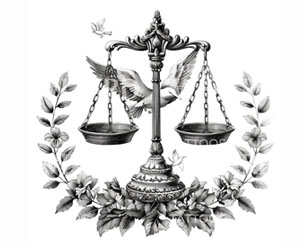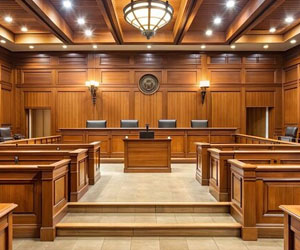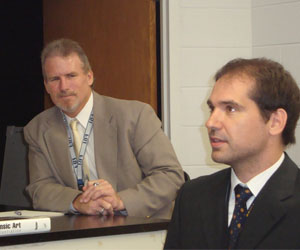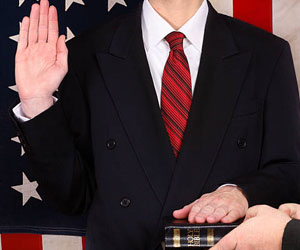
Laws vary from state to state and the composite artist should be familiar with his or her’s state’s laws and procedures and be ready to testify when called to do so. In some of the larger departments, composite artists go to court regularly, while smaller agencies may not ever testify. The artist may be called by either the Defense or the Prosecutors Office. Normally it will be the Prosecution side. Either way, the artist must be ready to testify and tell the truth – do not lie on the stand, be impartial, and explain the matter at hand convincingly! As with other testimony, the rules of evidence do apply, the artist may be deemed an expert witness. For this reason, the artist should be completely familiar with the discipline.

Forensic artists that are called to testify must be cognizant about first impressions starting with your dress in court. Although the Forensic Artist typically wear casual attire while doing his or her job, court attire should be business-like attire. The artist should project an aura of professionalism and confidence without being arrogant. The artist should be well versed in Forensic Art and be able to pass on this knowledge to the jury. The ability to communicate your knowledge is important. The artist’s choice of words may prove to be crucial in the acceptance of testimony. The artist should try to avoid legal or technical scientific jargon that tends to alienate the jury. Speak to the jury as if you are a knowledgeable peer. Engage with the jury when testifying.

The artist should engage with the jury. Have personality without being arrogant, joking, or sarcastic. the jury will be put off by these traits. Although the artist should practice his or her testimony, the testimony should not be memorized word for word. The testimony should flow smoothly and should demonstrate the artist’s knowledge and familiarity with the case at hand.
Don’t let the opposing attorney rattle you. Keep a level head. Do not argue or interrupt the questioning attorney or show bias. The artist must rely on the attorney or the judge to handle any unfair questions. Give the judge or attorney a chance to help clarify issues. Don’t get frustrated. Keep your answers short – yes or no is the best, but first explain when asked to do so. Maintain eye contact with the jury. they are the ones you testify to.

Confer with the attorney before testimony and review with him or her of the questions that may be presented during testimony. The witness should be advised of the questions to be asked by both sides. To qualify as an expert witness, the artist must answer “qualifiers” such as the artist’s background experience, The second part of expert witness declaration is where the opposing attorneys challenge the artist’s qualifications. The judge then the judge will qualify the artist as an Expert witness. Composite artists should understand that in almost every case, if they possess even minimal expertise, they will be allowed to testify as an expert but the extent of their qualification will bear on the weight of their testimony.

Develop a CV or Resume that explains your background and experience. Keep in mind that you may need to testify to the contents of the document.
—————————————————————————-
Below are a few common questions asked of the Forensic Artist in the courtroom:
- Define Forensic Art
- Define a Composite Drawing
- By whom are you employed?
- In what capacity are you employed at that agency?
- What percentage of the time are you a composite artist?
- how long have you been employed with that agency?
- how long have you worked as a composite artist?
- what training have you received in Composite/Forensic Art?
- Do you have any certifications or specialized training?
- Tell me about your background?
- Have you ever testified in court before?
- Have you ever testified as an expert witness?
- How many sketches have you done?
- is the sketch intended to look exactly like the defendant?
- what is the purpose of a composite?
- how is a composite sketch prepared?
- Explain how the facial reference catalog is used.
- how are reference photos utilized?
- why do you draw instead of using a computer program?
- Is this drawing yours?
- How do you know this drawing is yours?
- How is the sketch protected against change?
- Who gave you the information to develop the sketch?
- Did you discuss this case with anyone before testimony?
- Please state your name for the court?
- And by whom are you employed?
- In what capacity?
- What is a Forensic Artist?
- And how long have you worked in that capacity?
- Please tell the court any training and qualifications you have to be a Forensic Artist.
- How many composites have you done?
- What is a composite drawing?
- What is the purpose of a composite?
- How do police use composites?
- Please explain to the jury the process you use to do a composite?
- Please explain the role the witness plays in this process.
- Did you have an opportunity to draw a composite in connection with this case?
- Please tell the jury when and where the composite was done.
- Is this the composite that was a result of your interview with__________________________?
- How do you know?
- Is a composite intended to be an exact likeness of the subject?
- Was _______________________a good witness?
- Did the witness give you any other information during your interview that may be relevant to this case?
“To best prepare for court, you must be psychologically prepared. Armed with the truth, it is important to be mentally prepared to take the stand. To be confident on the stand, you must be you. Communication and effective communication are learned behavior. It is the rare individual who is born an effective communicator. Consider the information given and challenge yourself to be the most effective you that you can be.” (Roy Paschal)


